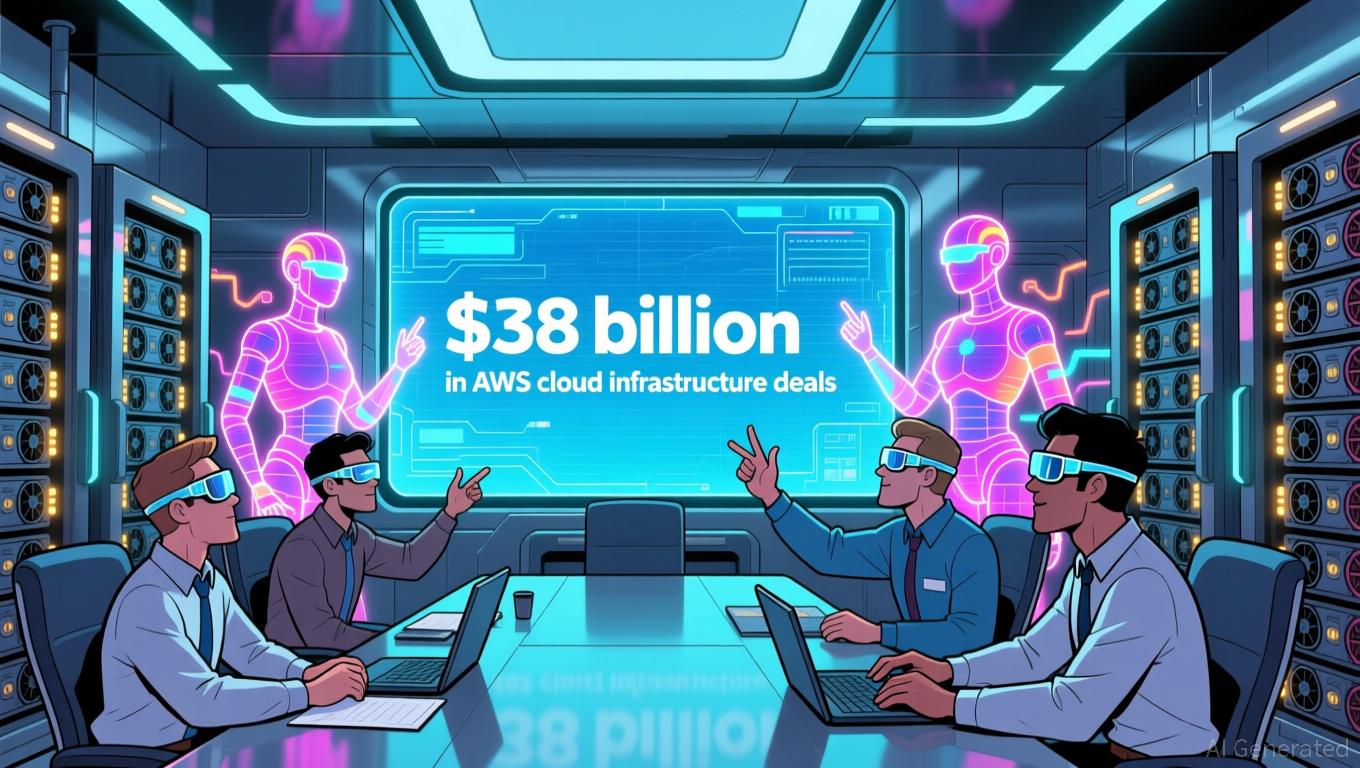U.S. and South Korea Broaden Agreement to Address China Amid Ongoing North Korean Threat
- U.S. Defense Secretary Hegseth highlights expanded military roles for troops in South Korea, including potential China-related operations, while prioritizing North Korea deterrence. - South Korea boosts defense spending by 8.2% to $46B and triples AI investment to $7B, advancing its goal to assume wartime command of joint forces by 2030. - U.S. approves South Korea's nuclear submarine project with Trump's endorsement, though fuel sourcing and construction location remain unresolved. - North Korea escalat
The strategic adaptability of U.S. military forces stationed in South Korea is once again in the spotlight as Washington and Seoul respond to shifting security challenges in the region. On a recent trip to the Demilitarized Zone (DMZ), U.S. Defense Secretary Pete Hegseth highlighted that deterring North Korea remains the alliance’s central mission, but also indicated that the U.S. is weighing broader operational possibilities for its troops — potentially involving scenarios outside the Korean Peninsula, such as conflicts with China. Nevertheless, Hegseth reiterated that North Korea is still the main concern,
At the same time, South Korea is strengthening its own defense capabilities. President Lee Jae Myung has unveiled an unprecedented 8.2% rise in the 2026 defense budget, bringing it to 66.3 trillion won ($46 billion) — the most significant increase in six years. The administration also intends to triple spending on artificial intelligence, reaching $7 billion, with the goal of becoming one of the top three AI nations globally, according to Al Jazeera. These initiatives are part of Seoul’s broader plan to eventually take over wartime operational control of the combined U.S.-South Korean forces, a longstanding objective pursued for more than 20 years, as VOI has reported.

An important step in U.S.-South Korea defense collaboration is the possible development of nuclear-powered submarines by South Korea, with backing from the U.S. President Donald Trump’s administration gave the green light for Seoul to move forward with this plan, and if U.S. technology is used for fueling, the first submarine could be operational by the mid-2030s,
Recent military actions by North Korea have heightened the urgency of these initiatives. While Hegseth was in the region, North Korea launched artillery rockets near the DMZ, with South Korea’s Joint Chiefs of Staff attributing the incident to rising tensions,
The U.S. and South Korea have also agreed to deepen their logistical partnership, with Seoul pledging to provide maintenance and repairs for U.S. naval vessels to ensure operational readiness during regional emergencies, according to Al Jazeera. This cooperation supports the U.S. objective of sustaining a flexible military presence in Asia, as highlighted in recent policy discussions covered by VOI.
Disclaimer: The content of this article solely reflects the author's opinion and does not represent the platform in any capacity. This article is not intended to serve as a reference for making investment decisions.
You may also like
Supreme Court Questions Trump’s Emergency Trade Authority

Global Liquidity Divides AI Leaders: Genie Faces Challenges While Palantir Rises
- Global liquidity boosts AI projects, with Genie Energy and Palantir as key beneficiaries despite market volatility. - Genie Energy’s Q3 2025 revenue rose 24% to $138. 3M , driven by higher energy sales, but gross profit fell 21% due to rising commodity costs. - Palantir reported $1.18B Q3 revenue, exceeding estimates, with 121% U.S. commercial growth and $10B U.S. Army AI contract. - Analysts highlight divergent AI trajectories: Genie faces margin pressures from energy costs, while Palantir’s government

OpenAI's $1.4 Trillion AI Risk: Will Altman's Refusal of a Bailout Succeed?
- OpenAI CEO Sam Altman rejected "too big to fail" claims, asserting the AI firm rejects government bailouts and state intervention in business decisions. - A $38B AWS partnership provides OpenAI with 100K+ Nvidia GPUs and millions of CPUs, diversifying cloud reliance after a $500B PBC restructuring with Microsoft . - Altman projects $20B annual revenue by year-end and $100B+ by 2030, despite $1.4T infrastructure spending plans raising sustainability concerns among analysts. - Political scrutiny grows as F

ALGO has dropped 52.88% since the start of the year, facing a combination of varied news and ongoing technical declines
- ALGO fell 52.88% year-to-date despite a 0.19% 24-hour gain, reflecting prolonged bearish momentum. - Kenadyr Metals' rebrand to Algo Grande Copper Corp. and Mexican mining project lacks direct impact on ALGO's trading dynamics. - Technical analysis shows ALGO trading below $0.16 with weak support at $0.15, risking further decline to $0.135. - Backtesting reveals 10%+ drops in ALGO yield negative returns (-11% at 30 days), with no reliable recovery patterns.